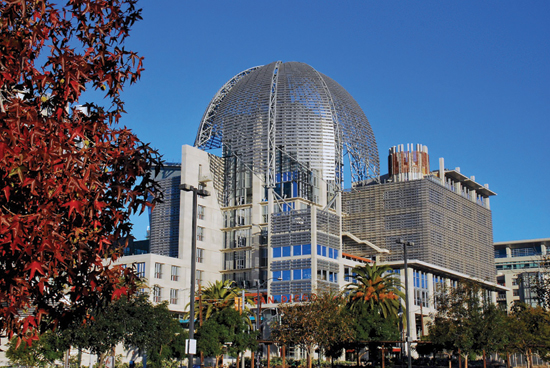Why Galvanize?
The Materials—Common, Safe, Sustainable
In hot-dip galvanizing, the two main materials, zinc and steel, are sustainable—they are nontoxic, abundantly available, and 100 percent recyclable without any loss of chemical or physical properties.
Zinc is the 27th most abundant element in the earth's crust, zinc exists naturally in air, water, and soil, and is present in rocks and many minerals in varying amounts. Plants and animals as well as rainfall and other natural activity cycle some 5.8 million tons of zinc annually through the environment. Ever since the beginning of time, organisms have adapted to the zinc in their environment and use it for specific metabolic processes. Zinc is essential for all life, in the areas of digestion, reproduction, kidney functioning, breathing, diabetes control, taste, smell, and other areas. The World Health Organization (WHO) estimates 800,000 people in developing nations die annually because of insufficiency of dietary zinc, symptoms of which range from immune dysfunction and mental lethargy to vision issues and fertility problems, respiratory and skin allergies, and premature aging. Zinc's healing properties are evidenced in the medicinal substances that are taken regularly. Is there anyone of a certain age who doesn't remember putting zinc on their nose to guard against sunburn? In addition to blocking more UV rays than other substances, zinc is widely used in treating many skin conditions, including sunburn, diaper rash, acne, cold sores, dandruff, wounds, burns, and surgical incisions. Zinc is also used in cosmetics and, in tablet form, has been recognized as a treatment for symptoms of the common cold.
Steel has a high strength/weight ratio and is known for its structural integrity. Its inherent strength facilitates design flexibility, accommodates a variety of aesthetics, and enables functional designs with long spans and curves. Because it is produced in accordance with national standards, there is no regional variation, hence hot-dip galvanized steel provides a consistent material quality. Steel is fire resistant, and does not burn or fuel a fire. As an inorganic material, it will not rot, split, or crack, twist or warp. Steel is light and easy to transport, and has a relatively rapid construction period. It creates minimal raw material waste, and at the end of its long life, steel can be fully recycled—in fact, it is among the world's most recycled materials.
As steel, like all building materials, corrodes when exposed to the atmosphere, it is important to deploy corrosion protection methods when steel is used in projects. To meet the demands of the long design lives of large modern development projects, many of which target a 50- to 100-year service life, hot-dip galvanizing offers corrosion protection in three levels—barrier protection, cathodic protection, and the zinc patina.
Barrier protection is the basic line of defense. The hot-dip galvanized coating isolates the steel from electrolytes in the environment, much like paints do. The protection is stable insofar as this barrier is not breached; however, corrosion will occur once the barrier begins to deteriorate. To ensure the integrity of the barrier, the coating must possess two critical properties: It must adhere to the base metal and it must be resistant to abrasion. With regard to these two parameters, zinc is an ideal barrier coating. Its corrosion rate is a fraction of steel's, so that a thin coating of zinc becomes similar to a significantly thicker steel element. Zinc's tightly bonded, impervious nature is far preferable to that of coatings like paint, which have pin holes that allow penetration of the elements, causing rapid spread of corrosion.
The Galvanic Series of Metals lists metals in order of electrochemical activity in seawater. Zinc is higher on the list than steel, meaning it is anodic to steel and thus offers cathodic or sacrificial protection. In cathodic protection, zinc will corrode to protect the steel beneath. Should the hot-dip galvanized coating be damaged so that the steel is exposed, corrosion will only begin after all the zinc is eroded. In “sacrificial” action, zinc will protect the steel even where cut edges, drill holes, scratches, surface abrasion suffered during steel erection, and the like may have exposed small spots of underlying steel. That said, bare spots do lessen the life of the coating, so it is best to touch up those exposed areas. The zinc will prevent underfilm corrosion, which spreads across a piece, much like under a paint coating.
Lastly, zinc patina, or zinc corrosion on the steel surface, offers a third level of protection. Like all metals, zinc corrodes when exposed to the atmosphere. But the naturally occurring corrosion of zinc produces by-products— zinc oxide, zinc hydroxide, and zinc carbonate—that result in a patina that, when fully developed, actually slows zinc's corrosion rate to about 1/30th the rate of steel in the same environment.










